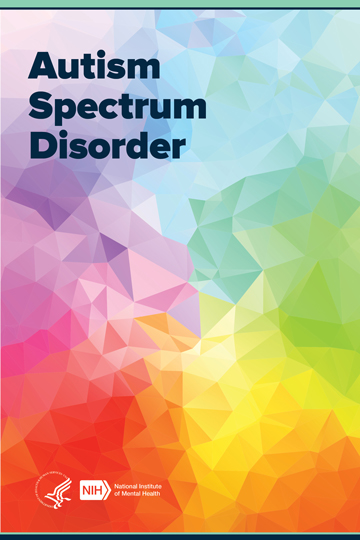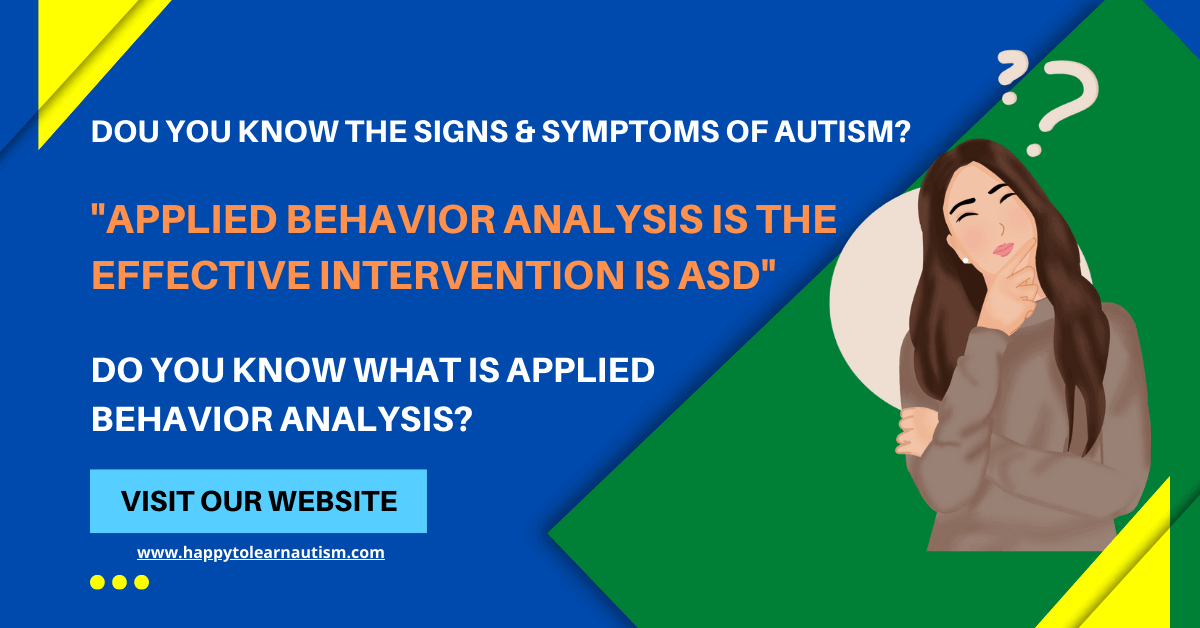Are social difficulties a sign to consider seeing an Aba Therapist near you?
Are social difficulties a sign to consider seeing an Aba Therapist near you?
Blog Article
Understanding the Impact of Behavioral Autism on Life and Social Communications
You could not recognize how deeply behavior autism influences everyday life and social communications. People on the range typically navigate a world loaded with interaction difficulties and sensory overload. These obstacles can lead to frustration and seclusion, affecting their connections and total health.
Defining Behavior Autism and Its Qualities
Behavioral autism, typically referred to as autism spectrum condition (ASD), incorporates a variety of problems identified by obstacles in social interaction, communication, and recurring habits. You may observe that individuals with ASD typically struggle to translate social hints, which can bring about misunderstandings in discussions. They might discover it difficult to establish eye contact or involve in tiny talk, making social situations feel frustrating.
Communication difficulties can manifest in different means, from delayed speech growth to a choice for using less words. Recurring actions, such as hand-flapping or shaking, can act as coping systems to take care of stress and anxiety or sensory overload. These features can profoundly influence day-to-day live, making it necessary for you to comprehend and support those with ASD. By recognizing these attributes, you can promote an atmosphere that advertises acceptance and urges effective communication, aiding individuals with autism grow in their daily communications.
The Spectrum of Autism: Comprehending Variability in Actions
Autism range condition (ASD) isn't a one-size-fits-all diagnosis; it differs commonly amongst people. You might see that some people with ASD show moderate signs, while others may encounter a lot more significant obstacles. This variability can materialize in habits, passions, and sensory level of sensitivities. You may run into individuals who are very spoken and involve conveniently in discussions, while others may like singular activities or communicate non-verbally.
Furthermore, the method people with ASD react to sensory input can vary greatly; some could be bewildered by intense lights or loud noises, whereas others prosper in stimulating atmospheres. The range additionally includes differences in social communications; some people might have a hard time to analyze social cues, while others navigate social setups with family member ease. Recognizing this variability is crucial, as it assists you appreciate everyone's unique experience and dressmaker assistance to their specific demands, fostering an extra comprehensive atmosphere for everyone.
Communication Difficulties Dealt With by People With Autism
When you connect with people on the autism spectrum, you may discover their one-of-a-kind interaction challenges. They typically encounter troubles with both spoken and nonverbal signs, which can affect their social communications. Understanding these barriers is essential for fostering much better links and support.

Verbal Communication Difficulties
Many people on the autism spectrum experience verbal interaction troubles that can significantly impact their everyday communications. You may find it testing to express your ideas, sensations, or requires clearly. This can cause frustration for both you and those around you, as misunderstandings take place. You might have problem with launching discussions, keeping a subject, or comprehending subtleties in speech. Typically, you might prefer utilizing basic language or recurring phrases, which can limit your capability to participate in much deeper discussions. Your tone, volume, or pace could not align with social expectations, causing others to misinterpret your intentions. Acknowledging these obstacles can assist you and your assistance network establish methods to improve communication and foster far better connections with others in your every day life.
Nonverbal Interaction Obstacles
Verbal interaction isn't the only difficulty people on the autism spectrum face; nonverbal interaction barriers can be equally as substantial. You could discover it challenging to interpret body movement, faces, and eye call, which are crucial for effective communication. These challenges can bring about misconceptions or false impressions of social cues, making communications feel frustrating or complex. You might have a hard time to reveal your very own emotions through nonverbal means, leaving others not sure of your intentions or feelings. This detach can develop sensations of seclusion and frustration. Acknowledging these obstacles is important for fostering understanding and empathy in your interactions. By resolving nonverbal interaction, you can locate techniques to boost your social experiences and boost your general lifestyle.
Social Interaction Effects
Social interactions can often feel frustrating as a result of the distinct communication challenges encountered by individuals with autism. You might battle with interpreting social cues, making it hard to recognize mockery or body movement. This can result in misconceptions or unpleasant moments in conversations. Furthermore, starting and maintaining discussions might read what he said really feel difficult, creating stress and anxiety in social scenarios. You might prefer structured settings, making spontaneous interactions awkward. It's likewise common to experience difficulty in involving in small talk, which can prevent developing new relationships. Recognizing these obstacles can help you discover approaches to boost communication, such as exercising social skills in safe settings or using visual aids - Aba Therapist Near Me. Understanding your demands allows you to browse social interactions with greater confidence and ease.
Social Interaction and Partnership Building in Autism
While building relationships can be challenging for people with autism, understanding their unique viewpoints and interaction styles can foster significant links. You could notice that lots of individuals on the range choose direct communication and might have problem with social hints or little talk. By being simple in your communications, you can help produce an atmosphere where they really feel comfortable.
Put in the time to observe and listen just how they express themselves. This insight can click this site assist you in steering conversations better. Engaging in shared passions can likewise act as a bridge to much deeper connections. Whether it's a pastime, a preferred program, or a mutual interest, these common threads can open up doors to friendship.
Daily Life Routine: Browsing Strategies and obstacles
Steering day-to-day live regimens can be especially challenging for people with autism, especially when unforeseen modifications occur. You may discover comfort in having an organized routine, as it aids you expect what's following. When interruptions occur, it's normal to feel distressed or overwhelmed. To navigate these challenges, consider applying aesthetic routines or lists. These tools can supply quality and confidence.
Establishing a regimen that includes sensory breaks can additionally be beneficial. This helps produce an understanding setting.
Lastly, practice mindfulness methods to manage anxiety and anxiety. Simple breathing workouts or grounding strategies can make a significant difference. By incorporating these strategies, you can improve your everyday routine and lessen disturbances, making life feel extra workable.
Staminas and Capacities of Individuals on the Autism Range
Recognizing everyday life routines is simply one aspect of the autism experience. Numerous individuals on the autism range possess amazing toughness and capabilities that set them apart.
Additionally, your memory abilities usually radiate, particularly in locations of rate of interest. Autism Therapist. This flair for retaining information can make you an important resource in fields like innovation, art, or science. You may also show solid aesthetic reasoning, allowing you to picture intricate ideas and resolve problems artistically
In addition, your unique viewpoint on the globe can cultivate compassion and understanding in others, enhancing social communications. Accepting these toughness not just improves your self-confidence however likewise assists others value the varied talents you give the table.
Creating Comprehensive Environments for Individuals With Autism
Producing comprehensive atmospheres for individuals with autism begins with creating sensory-friendly areas that satisfy their distinct needs. You can additionally cultivate possibilities for social communication, assisting to develop connections and friendships. By making these changes, you'll add to a much more inviting environment for everybody.
Creating Sensory-Friendly Spaces
While developing sensory-friendly rooms, it's important to show on the special needs of individuals with autism. Integrate peaceful areas where people can pull back and recharge when overwhelmed. Include aesthetic timetables or clear signs to help individuals browse the room with confidence.
Advertising Social Communication Opportunities
Designing sensory-friendly areas not only addresses specific comfort yet likewise sets the see this here stage for purposeful social communications amongst people with autism. To advertise these interactions, create comprehensive settings that invite participation. Organize organized tasks, like art classes or team games, that urge collaboration without overwhelming sensory input. Use visual help and clear communication to aid everyone involve easily. Urge peer mentoring, combining people with autism with helpful peers who can lead them through social scenarios. In addition, take into consideration hosting routine area events that celebrate neurodiversity, fostering approval and understanding among all participants. By applying these strategies, you can boost social opportunities, assisting individuals with autism build relationships and strengthen their social skills in a secure, welcoming atmosphere.

Frequently Asked Inquiries
How Can Pals Assistance Somebody With Behavioral Autism?
You can sustain a buddy with behavior autism by holding your horses, paying attention actively, and respecting their boundaries. Take part in tasks they take pleasure in, connect openly, and create a comfortable atmosphere where they feel valued and recognized.
What Resources Are Readily Available for Moms And Dads of Children With Autism?
You can check out different resources for moms and dads of children with autism, including support groups, educational internet sites, and neighborhood social work. Attaching with various other moms and dads can also supply useful insights and shared experiences to help browse challenges.
Can Behavioral Autism Modification In Time?

Yes, behavioral autism can transform with time. You could discover shifts in communication, social skills, and actions as your kid expands. Early intervention and support typically play essential functions in these developmental changes.
Exactly How Do Sensory Sensitivities Influence Every Day Life?
Sensory sensitivities can make everyday experiences frustrating. You might deal with loud noises or bright lights, leading to tension or evasion. Discovering settings that suit your requirements can greatly improve your comfort and general every day life.
What Prevail Misconceptions About Behavioral Autism?
You could think behavioral autism just affects interaction abilities, but it's more complex. Lots of assume people do not have empathy or intelligence, which isn't real. Understanding these false impressions aids foster acceptance and support for those on the range.
Behavior autism, often referred to as autism range disorder (ASD), incorporates a variety of conditions characterized by difficulties in social interaction, interaction, and repetitive actions.Social communications can often really feel overwhelming due to the unique communication obstacles dealt with by people with autism.Creating sensory-friendly spaces not only addresses private convenience but likewise sets the phase for purposeful social communications among individuals with autism. Motivate peer mentoring, pairing people with autism with helpful peers that can assist them with social scenarios. By applying these methods, you can boost social possibilities, helping people with autism construct friendships and reinforce their social skills in a risk-free, inviting setting.
Report this page